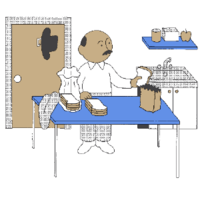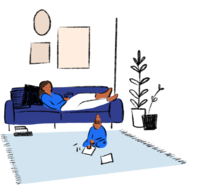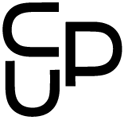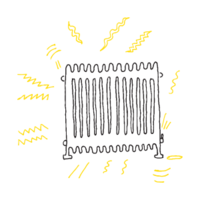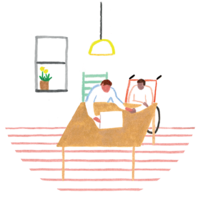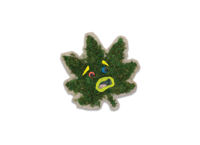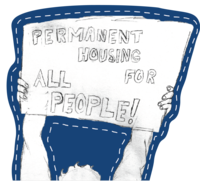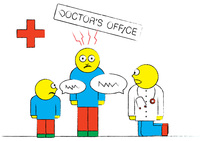A Chat with Nick Johnson, 2017 Fellow for Change in Design

The CUP Fellowship for Change in Design is an initiative to support the development of a pipeline of talented individuals from historically under-represented communities into the design fields, and to dismantle the systemic biases that stand in the way of their advancement as leaders in these fields. Nick Johnson, a graduate of the Graphic Design Program at Western Michigan University, was selected as our fellow last year and joined the CUP team in June. We recently sat down with Nick to hear what it’s been like to be the first CUP Fellow for Change in Design.
Q: What did you do as the first CUP Fellow for Change in Design?
Since being at CUP, I have been supporting different projects and assisting CUP staff in feedback sessions on collaborative projects, content building and design direction. Currently, I’m working on a Public Access Design project alongside Program Manager Oscar Nuñez, designer Miles Barretto, and the Prisoner Reentry Institute (PRI). PRI is looking to create an educational tool for individuals who are or have been involved with the criminal justice system that are interested in enrolling in college.
[One of the features of the fellowship is that CUP sets up one-on-one meetings with a series of mentors, designers who are further along in their careers and can provide advice, guidance, and perspective about the design field]
Q: What was a highlight of your fellowship?
My mentorship interviews were a big highlight for me! I met with well-known design professionals such as Njoki Gitahi of IDEO, Jonathan Jackson of WeShouldDoItAll, and Renda Morton of The New York Times. I valued getting to chat with professional designers and designers of color in the field in a more casual way–we were able to really connect and relate on the basis of our shared experiences as people of color (POC) in the design world. It was great to talk about my ideas for the future and get great advice–especially on a personal project I’m developing that would profile and connect designers of color across the country. Like any field, there is an underrepresentation of people of color in design; it can be hard to find yourself in places, and even see a future for yourself in design. It is all the more important for emerging POC designers to connect with established POC designers.
I also designed the identity for the CUP Fellowship for Change in Design and designed some of the materials for CUP’s 2017 annual fundraising benefit with the illustrations and identity created by Kelli Anderson!
Q: What are your plans for the future?
I’m looking into design residencies and different firms to be able to advance my career, as well as continue to work on my project to uplift the work of designers of color. This fellowship has improved my thinking and design process on integrating the client into the project to produce a more useful and effective final product. I’m hoping to take these skills to a new position where I am able to exchange what I have learned for more assets and experiences. I have learned that perfectionism isn’t the goal – my goal is finding an environment where I can constantly be in the pursuit of growth and development.
Q: Why do you think it’s important for people of historically under-represented communities to become designers?
Every day we wake up and use something that wasn’t made by someone that looks like you, or see a representation of yourself made by a person who doesn’t belong to your community. There’s a scarcity of positive imagery of people of color, especially Black people in our society. We need to see positive representations of ourselves to be able to pursue our careers, goals, and dreams–this was and is a problem for me and I know this problem is shared by many others. It’s important for there to be diversity amongst designers as much as it is important for there to be diversity in the content of design itself – the aesthetics, inspiration, and ideas that guide it. My own design practice takes inspiration from my background – finding beauty in contemporary Black art, referencing my roots, and drawing from traditional African sculptures.
Having diversity in design is not just about equal representation–it changes the way design happens too! Right now, we have design solutions for issues in Black, Asian, Latino communities by people who are not from those communities. I believe the solutions are more effective when we have diversity in design–it brings out diverse thinking that is more authentically rooted in the contexts and needs of particular communities.
Find out more and apply here!
